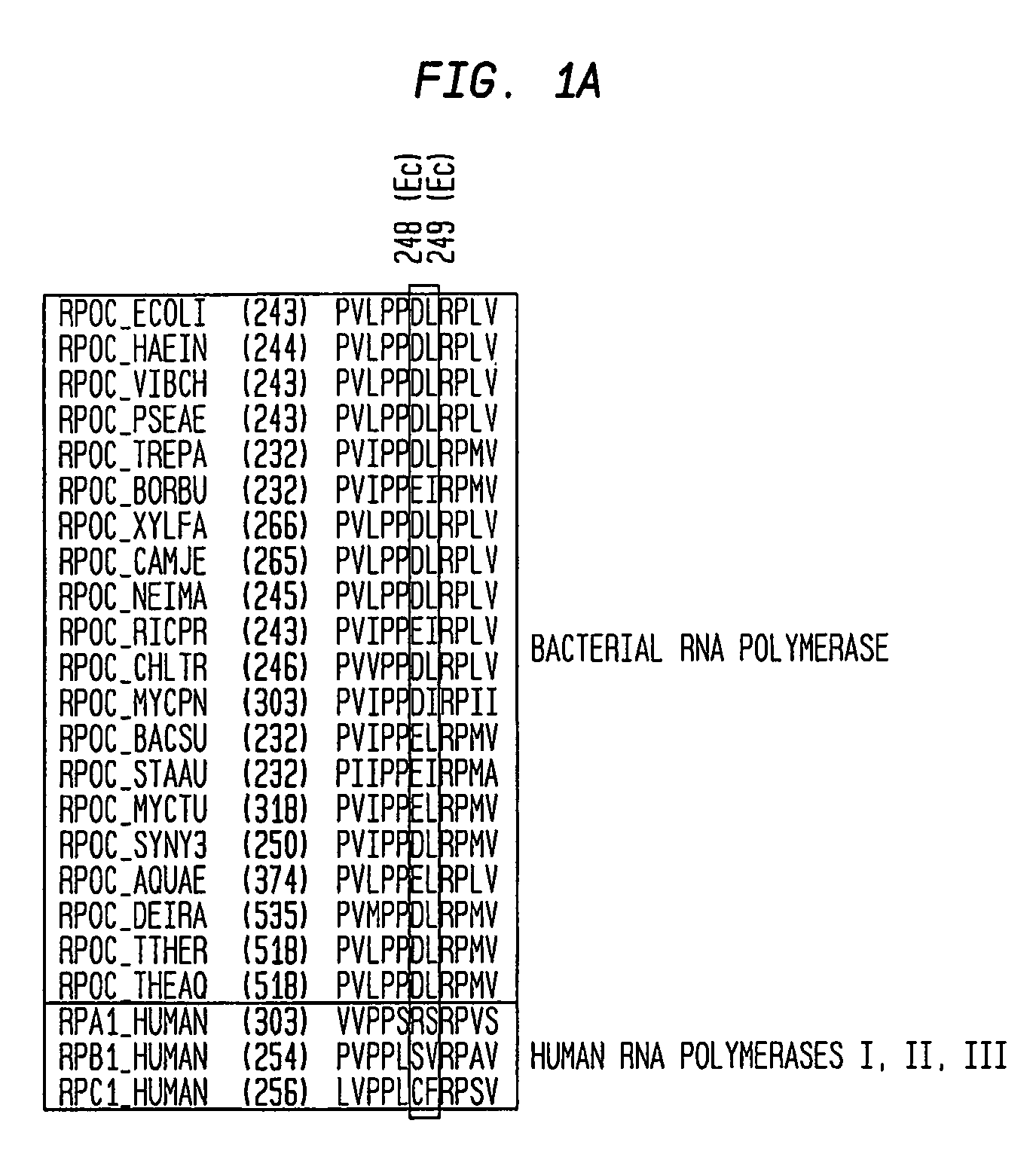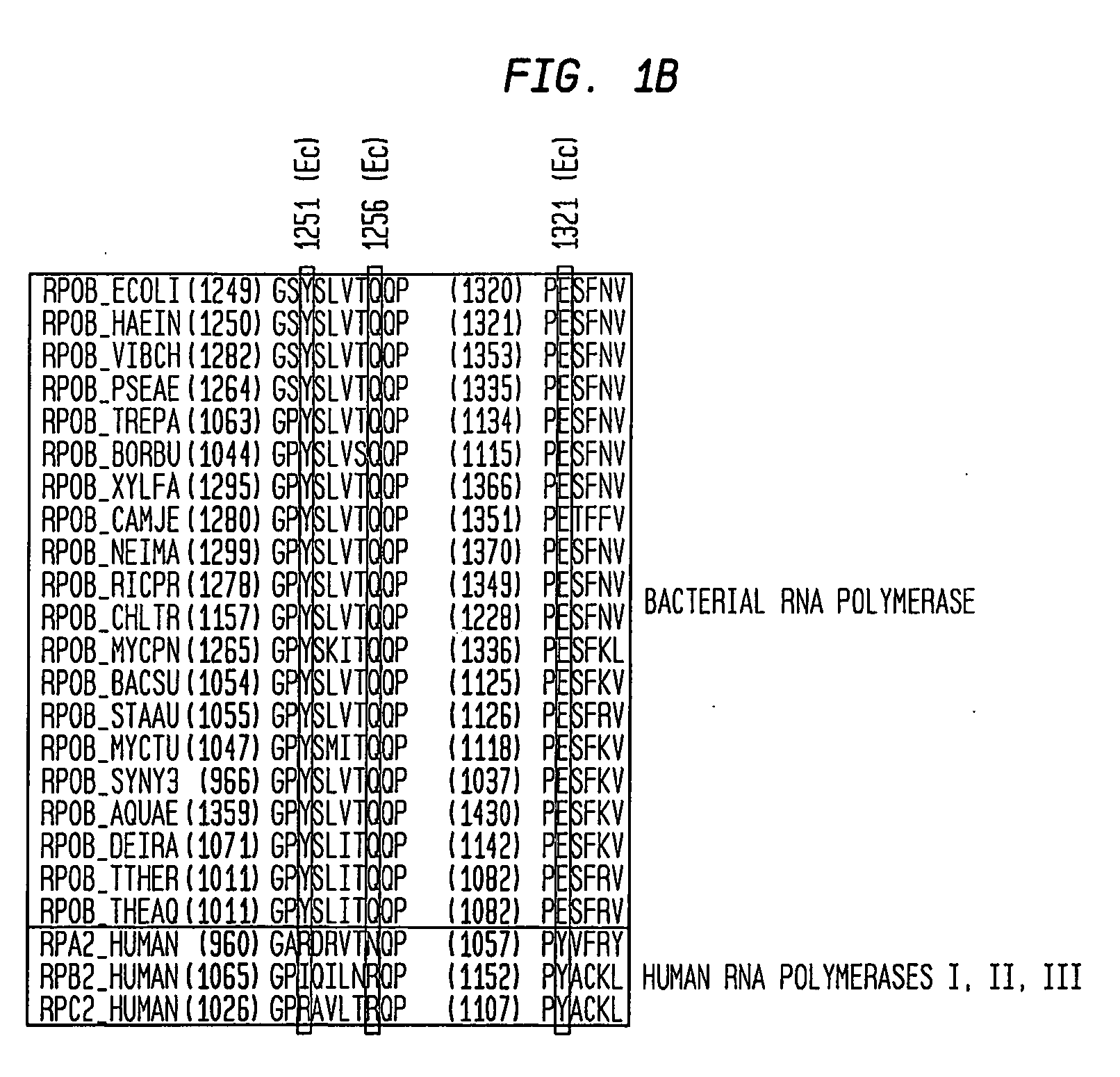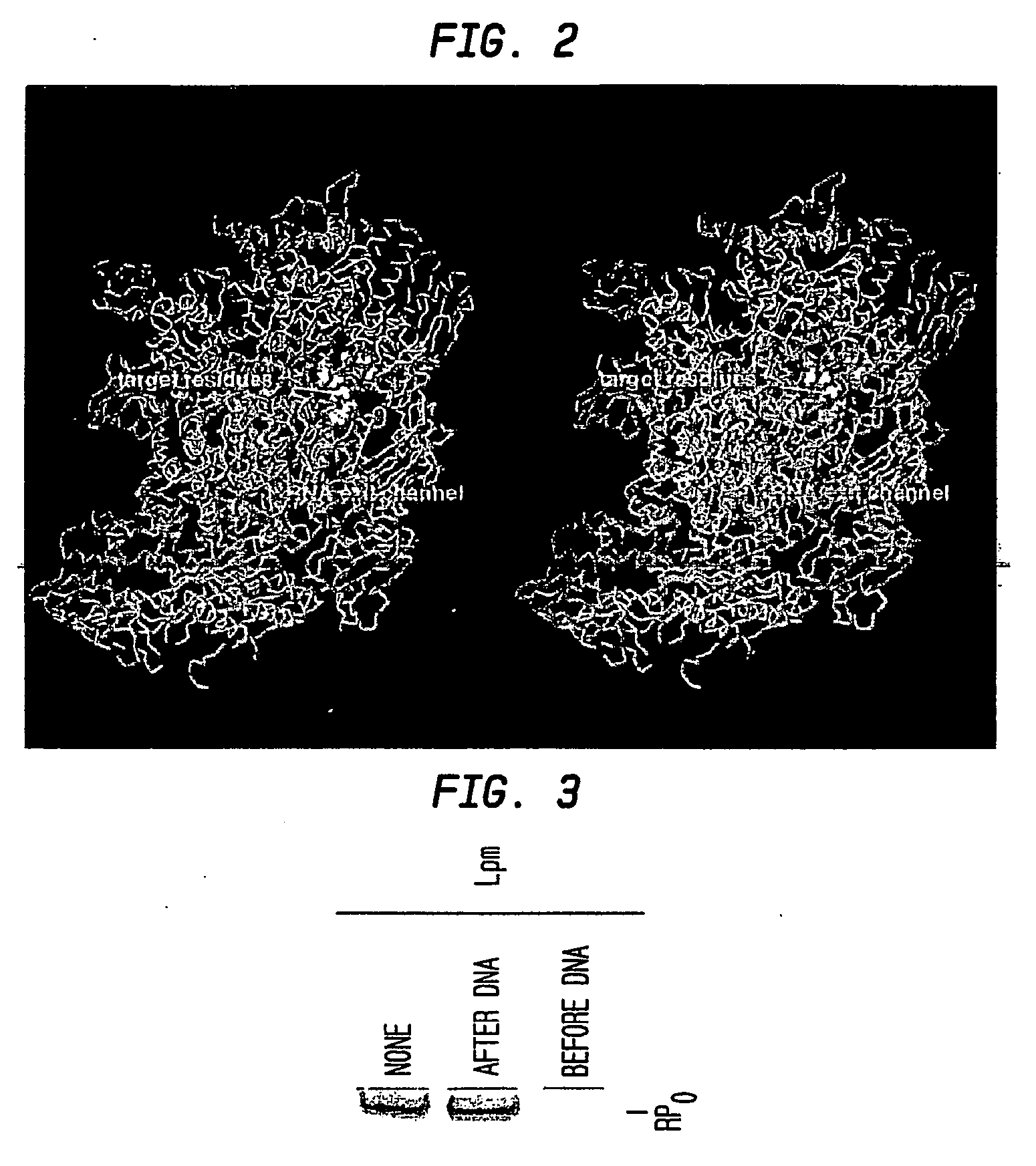Rna-exit-channel: target and method for inhibition of bacterial rna polymerase
a technology of rna polymerase and target, which is applied in the direction of enzymology, transferases, instruments, etc., can solve the problems of grave and growing threats to public health infections
- Summary
- Abstract
- Description
- Claims
- Application Information
AI Technical Summary
Benefits of technology
Problems solved by technology
Method used
Image
Examples
example 1
[0135] The macrocyclic antibiotic lipiarmycin (Lpm) inhibits bacterial RNAP (Sergio et al., (1975) J. Antibiot. 1975, 543-549; Talpaert et al., (1975) Biochem. Biophys. Res. Commun. 63, 328-334; Sonenshein et al., (1977) J. Bacteriol. 132, 73-79; Sonenshein et al., (1979) J. Mol. Biol. 127, 55-72). Lpm-resistant (LpmR) mutants of Bacillus subtilis previously have been isolated and mapped to the locus encoding the RNAP β and β′ subunits (Sonenshein et al., (1977) J. Bacteriol. 132, 73-79). Applicant has obtained and sequenced three such mutants (provided by L. Sonenshein, Tufts University Medical School). As shown in Table 1, applicant's sequencing data indicated that the first LpmR isolate from Bacillus subtilis has a CAA to AAA codon substitution in the rpoB gene resulting in a Gln to Lys amino acid substitution at residue 1061. The second LpmR isolate from Bacillus subtilis has a CTC to CGC codon substitution in the rpoC gene resulting in a Leu to Arg amino acid substitution at re...
example 2
[0136] To define systematically determinants for function of Lpm, saturation mutagenesis of Escherichia coli rpoB and rpoC was performed, and LpmR mutants were isolated and characterized (targeting codons or residues located within 20 Å of Bacillus subtilis LpmR sites in the three-dimensional structure of RNAP; methods as in Mukhopadhyay, et al., (2004) Mol. Cell, in press, except that selection was performed in hyper-permeable strain D21f2 / TolC (rfa tolC; Fralick et al., (1994) J. Bacteriol. 176, 6404-6406)). 24 independent single-substitution Lpmr mutants were identified (Table 2). The substitution sites define an approximately 20 Å×20 Å continuous surface, located within the RNA-exit-channel, spanning the target, and containing each residue of the target (i.e., residues 1251, 1256, and 1321 of β and residues 248-249 of β′; Table 2). Substitution sites corresponding to substitution sites in the Bacillus subtilis LpmR mutants described above were among those identified (i.e., resid...
example 3
[0137] Fluorescence-resonance-energy-transfer (FRET) was used to assess effects of Lpm on distances between fluorescent probes incorporated into bacterial RNAP and complementary fluorescent probes incorporated into the bacterial initiation factor σ70 in the context of RNAP holoenzyme (composition β′ / β / αI / αII / ω / σ70).
[0138] FRET occurs in a system having a fluorescent probe serving as a donor and a second fluorescent probe serving as an acceptor, where the emission wavelength of the donor overlaps the excitation wavelength of the acceptor. In such a system, upon excitation of the donor with light of its excitation wavelength, energy can be transferred from the donor to the acceptor, resulting in excitation of the acceptor and emission at the acceptor's emission wavelength. The efficiency of energy transfer, E, is a function of the Förster parameter, Ro, and of the distance between the donor and the acceptor, R:
E=[1+(R / Ro)6]−1
[0139] Thus, if one quantifies E and Ro, one can determine...
PUM
| Property | Measurement | Unit |
|---|---|---|
| total molecular mass | aaaaa | aaaaa |
| concentration | aaaaa | aaaaa |
| molecular weight | aaaaa | aaaaa |
Abstract
Description
Claims
Application Information
 Login to View More
Login to View More - R&D
- Intellectual Property
- Life Sciences
- Materials
- Tech Scout
- Unparalleled Data Quality
- Higher Quality Content
- 60% Fewer Hallucinations
Browse by: Latest US Patents, China's latest patents, Technical Efficacy Thesaurus, Application Domain, Technology Topic, Popular Technical Reports.
© 2025 PatSnap. All rights reserved.Legal|Privacy policy|Modern Slavery Act Transparency Statement|Sitemap|About US| Contact US: help@patsnap.com



